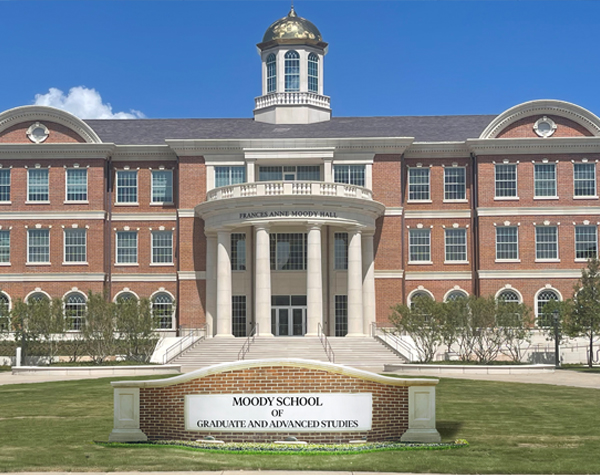
Frances Anne Moody Hall

Buildings consume large amounts of energy, water, and resources and account for 39% of total greenhouse gas (GHG) emissions globally. Continuing with SMU's commitment to environmental stewardship, all campus buildings pursue LEED certification.
Since its inception in 1998, LEED (Leadership in Energy and Environmental Design) certification is a globally recognized framework for the design, construction, and operation of high-performance buildings. LEED certification requires projects to comply with all prerequisites and achieve credits from nine different categories that address land use, transportation, water, energy, materials and waste, health, and indoor environmental quality. Certified projects have successfully completed a third-party review process by the GBCI and are awarded points that correspond to the levels of LEED certification: Certified (40-49 points), Silver (50-59 points), Gold (60-79 points) and Platinum (80+ points).
All campus buildings capitalize on the connection to the campus and the community, energy efficiency, water conservation, and providing a healthy environment for students and faculty.
Project: Frances Ann Moody Hall,
Pursuing LEED-NC Silver
Architect: SmithGroup
Contractor: The Beck Group
LEED Consultant: The Beck Group
Completion: Anticipated February 2023
Size: 43,000 SF
Regular Occupancy: 415 (FTE, students, and visitors)
Use: Doctoral and masters academic building.
Project Description:
The three-story building includes a 170-person auditorium, a grab-and-go café, state-of-the-art classrooms, a reading room, a seminar room, conference rooms, and office suites for Moody Fellows, SMU Scholars, the Assistant Provost of Research office, and the Dean.
The open core structure from the ground level up to the cupola allows natural light to penetrate the building. The interior design provides a clean, professional palette of sustainable materials that support collaboration and quiet research spaces.
Project Highlights:
- The building is ideally situated to provide staff and students access to local neighborhood amenities and is within 1,000 feet of three DART Bus routes. Being in a dense urban area helps reduced urban sprawl, reduces greenhouse gas emissions associated with driving, increases walking and physical activity, and encourages support of local businesses.
- Water conservation efforts focused on low flush and flow fixtures and water wise landscaping. These strategies result in a 36% indoor water use reduction and landscaping that uses 38% less irrigation. That’s a savings of over 72,000 gallons of water a year.
- SMU’s environmental stewardship extends to responsible sourcing of materials. Building materials were selected based on durability as well as human health and environmental impacts. Over thirty products have Environmental Product Declarations (EPDs) and material ingredient reporting certifications. An EPD evaluates a material’s environmental impacts over its life cycle. Material ingredient reporting provides transparency about the chemicals that are used in building products and disclose possible human health impacts.
- Adhesives, sealants, paints, coatings, flooring, walls, insulation, and engineered wood within the building meet strict VOC emissions requirements to reduce off-gassing and provide improved indoor air quality.
- During construction, an Indoor Air Quality Management Plan has been implemented to protect stored building materials from dirt, dust, particulates, and moisture. After construction, new high efficiency filters will be installed in the building’s mechanical ventilation system. A green housekeeping plan will be implemented to help maintain good indoor air quality.
- The university is also committed to reducing and recycling as much of their waste as possible. The contractor’s goal is to recycle over 75% of the waste generated during construction of the building. Additionally, the campus wide recycling program collects plastics, metals, paper, cardboard, glass, e-waste, batteries, and furniture for reuse and recycling.
- The building engineers implemented improvements to the building envelope, mechanical system, and lighting controls to reduce energy consumption. To optimize efficiency, the project is undergoing building commissioning activities to ensure the building is running and operating as intended.